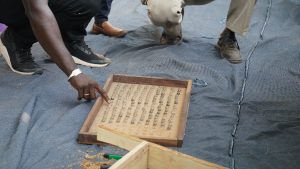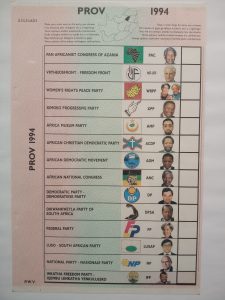2.4 Reducing Barriers
Over 200 countries in the world use some form of paper ballots (Schumacher & Connaughton, 2020), and most strive to use ballots that are simple and easy to understand; however, illiteracy, language proficiency, and disability are barriers that can prevent full participation.

Vote By Marbles
In The Gambia, where many voters are illiterate, elections are conducted by placing marbles in drums that are painted specific colours to correspond with each political party (IFES, 2023).
Literacy & Language Proficiency

Ballots in France are printed in French. Canadian ballots are printed in both official languages, English and French (Government of Canada, 2025). For voters who aren’t fluent in an official language, voting can be difficult. Some jurisdictions offer ballots to voters in multiple languages. For example, in Cook County, Illinois, over 30% of the households speak a language other than English (ShareAmerica, 2020). To accommodate the linguistic diversity, the County makes ballots available in multiple languages, including Spanish, Korean, and Arabic (ShareAmerica, 2020). Many countries throughout Africa and Latin America use colours, party logos, and candidate photos to reduce confusion (Reynolds and Sttenbergen, 2006).
Offering ballots in multiple languages ensures that linguistic minority groups are able to participate in the democratic process.

